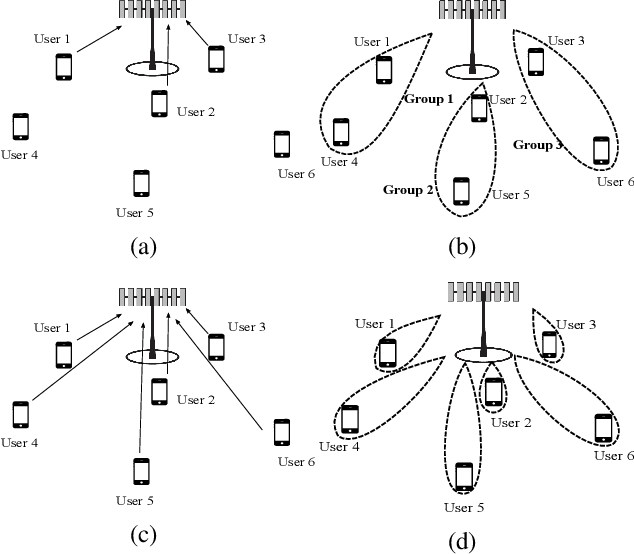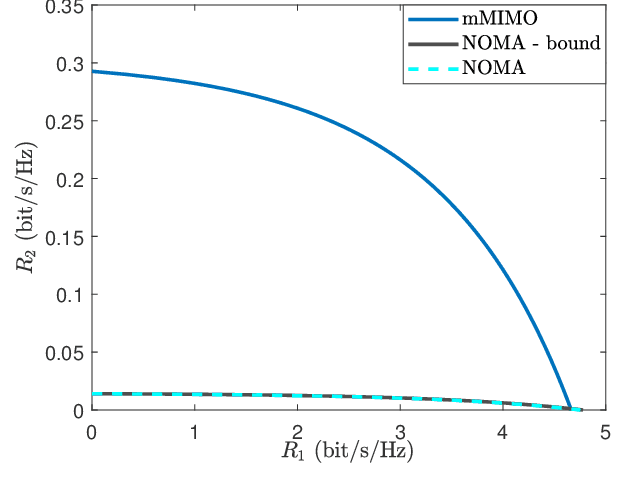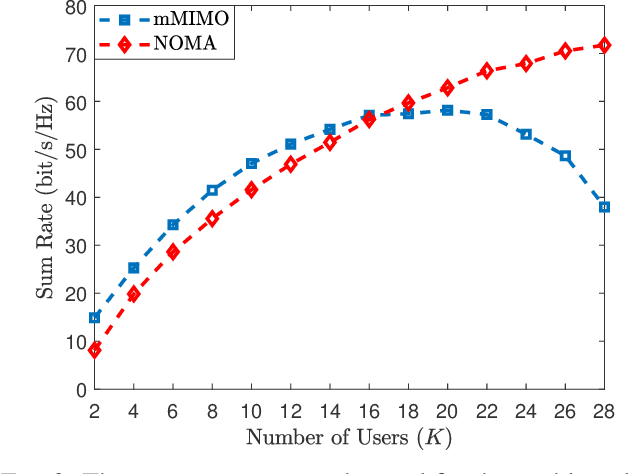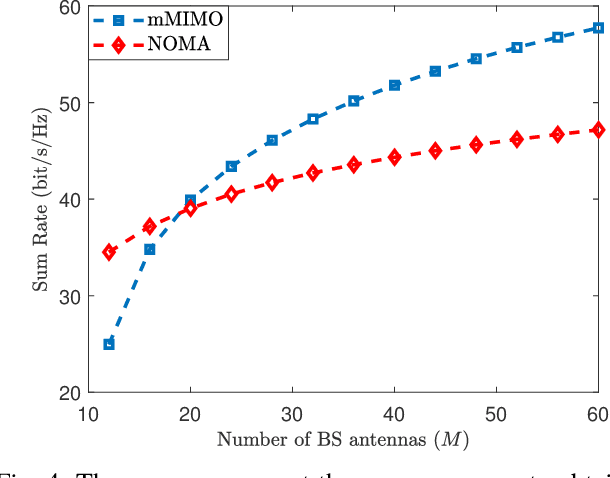NOMA Versus Massive MIMO in Rayleigh Fading
Paper and Code
Dec 31, 2021



This paper compares the sum rates and rate regions achieved by power-domain NOMA (non-orthogonal multiple access) and standard massive MIMO (multiple-input multiple-output) techniques. We prove analytically that massive MIMO always outperforms NOMA in i.i.d.~Rayleigh fading channels, if a sufficient number of antennas are used at the base stations. The simulation results show that the crossing point occurs already when having 20-30 antennas, which is far less than what is considered for the next generation cellular networks.
* Published at the 2019 IEEE International Workshop on Signal
Processing Advances in Wireless Communications (SPAWC), 5 pages, 5 figures.
arXiv admin note: substantial text overlap with arXiv:1809.07072
 Add to Chrome
Add to Chrome Add to Firefox
Add to Firefox Add to Edge
Add to Edge